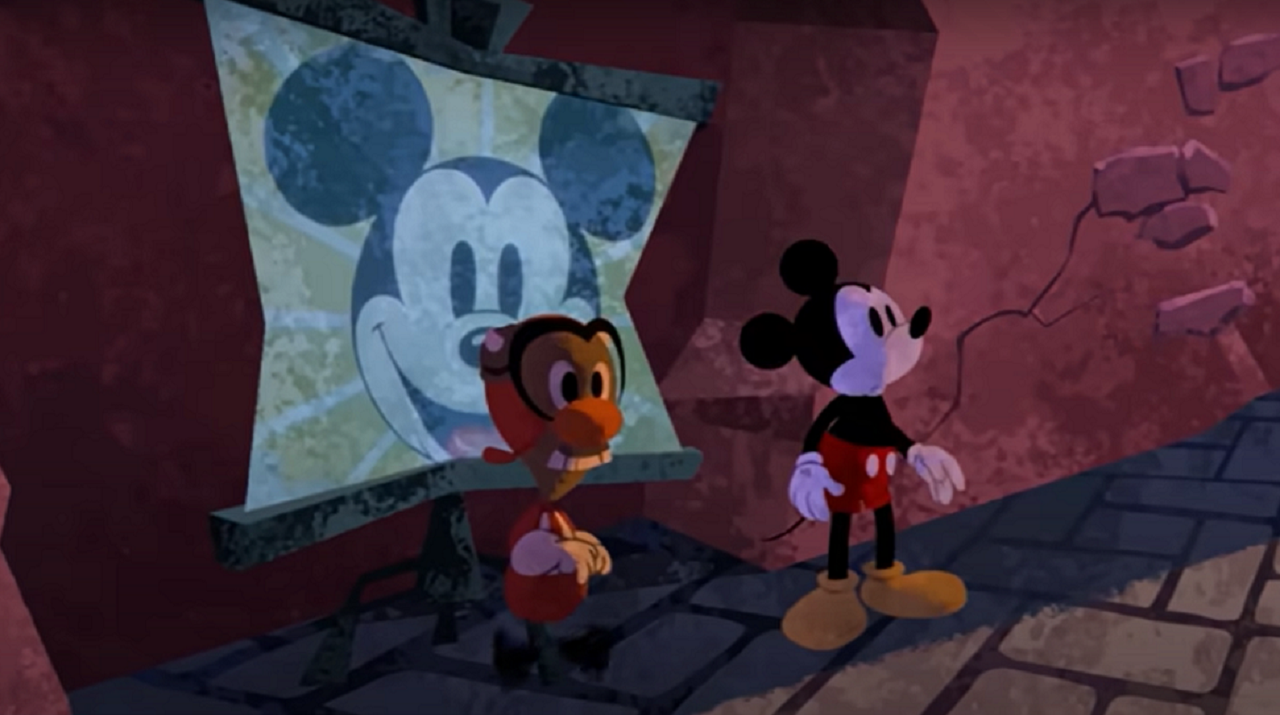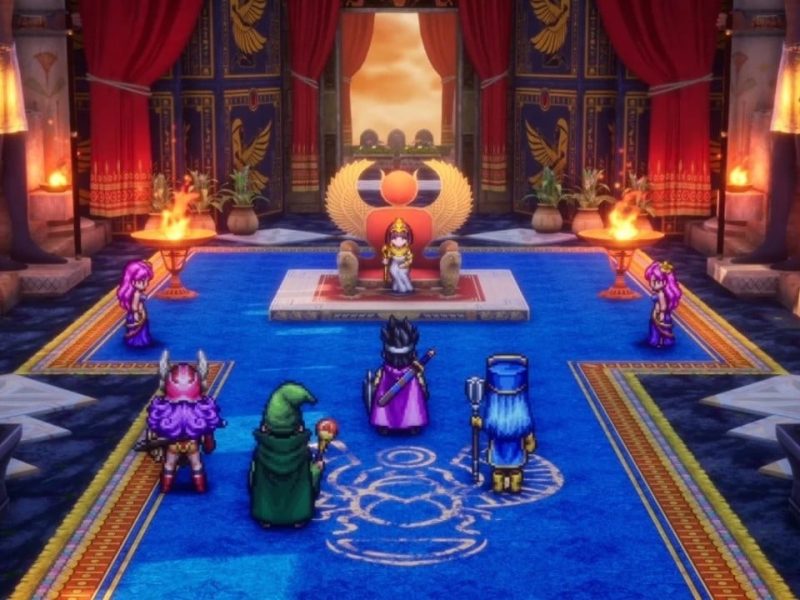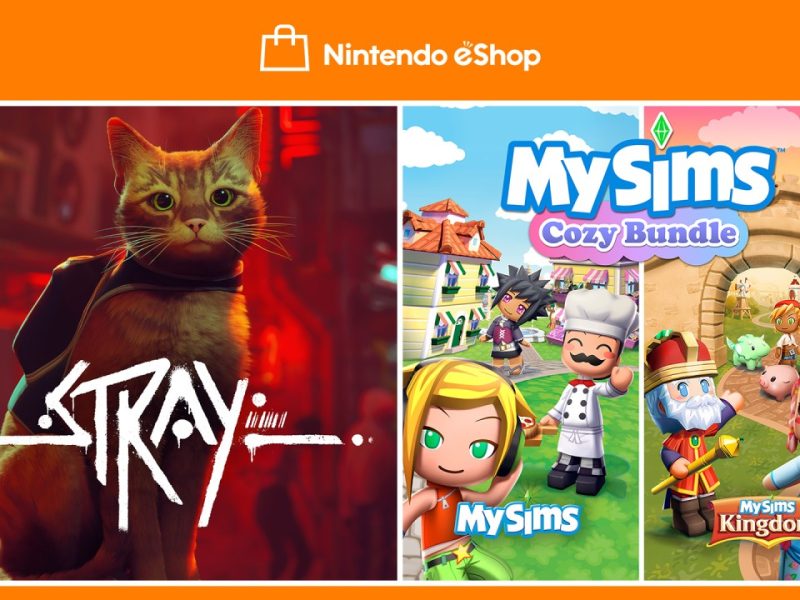Disney Epic Mickey: Rebrushed was a victim of timing when it first released in Nov 2010. While it had some success on the Wii (and subsequent entries on other systems), it faced the platforming one-two punch of Donkey Kong Country Returns and Sonic Colors, both Wii best sellers. These games, which had nearly 9 million combined sales, came out mere days prior while already having existing series fans. Hopefully, enough time has passed for Epic Mickey to tap into the nostalgia crowd.
This 3D platformer is more story-driven than you might expect. While the bulk of the tale (and game) is dripping with originality, it unfortunately gets introduced on a borrowed note with another take on Fantasia‘s “Sorcerer’s Apprentice.” But I can appreciate this as a means to reacquaint players with aspects of Mickey’s personality underplayed in recent times. The mischievousness and naivety on display fit Mickey’s character and lead to a thought-provoking story. Because it’s his mishaps with paint thinner that ultimately lead him to a dimension of Disney characters forgotten over time, Wasteland. And, true to the marketing, it does lead to “an unforgettable adventure for long-time fans and newcomers alike.”
In fact, Wasteland is just as much the star as Mickey, if not more so. It’s a realm led by Oswald the Lucky Rabbit, who, despite his namesake, proves there’s no such thing as luck. He was essentially Mickey Mouse before Mickey existed but soon replaced. While Mickey went to stardom, Oswald became forgotten. His haunts have seen destruction (in parts) thanks to Mickey’s carelessness with the thinner. It’s a Tim Burtonesque world in decay, filled with forgotten lore—not just Disney animation, but toys and even other videogames. Finding buried carts of Mickey Mousecapade (NES) or one of The Magical Quest carts (SNES) is sobering on a few levels, showing an attention to detail that most should recognize.
What becomes of Wasteland is determined by your play style. With the brush in his hand, Mickey paints and thins as the platforming and puzzles dictate. There are copious amounts of collectibles and sidequests, and how driven you are to find these can go a long way toward the outcome of Wasteland. To illustrate, on this playthrough, I wanted to leave the world better than when I arrived, thus going through the time-consuming process of seeking out 100% of the things I could paint, including areas I had to thin at first for progression. This style reflects my completionist leanings, and thankfully, I was patient enough to enjoy playing this way. But for those who’d prefer to get through an already slower game more quickly, combat and quests offer multiple approaches for players to choose from, and the temptation for less taxing routes is real. Character interactions (dialogue and rewards) will change accordingly, strengthening how the gameplay ties into the plot plus providing replay value.
Wasteland has a central hub from which you can access other areas. These cities, towns, and villages are diverse and (unlike many other games) actually appear like living worlds. Characters will wander about, and buildings are stuffed floor to ceiling with furniture and items. Besides simply being fun to look at, these bring even more weight to your adventure. To access these areas, you jump into projectors, which bring on some welcomed side-scrolling fun. When backtracking becomes necessary, those less interested in e-tickets (currency) may prefer to bypass these sections for a nominal cost. I stumbled upon the fact that this is a new feature (at least for non-Japanese players) added for the Switch version, highlighting how infrequently I used it in the Wii original.
Other new features include a dash and a sprint, though since Mickey could always run, I nearly forgot about these. One thing I suspected but later confirmed was the rise in collectibles. “Three times as many concept art collectibles as the original game,” proclaimed the review guide. I appreciate the adjustment, though I wish the auto-save had likewise seen modification to account for this (plus handheld play). While the amount to collect could overwhelm some, I feel nothing but gratitude for the increase. Given the scope of your travels with horizontal and vertical platforming in huge areas filled with hidden nooks and crannies, it just makes sense.
The most sizable changes are presentation and control. As for the former, it benefits by having strong material to work with. Epic Mickey looked great on Wii (really pushing the hardware despite some muddy textures), with an art style that’s proving timeless. Now upgraded to high-definition, the graphics especially pop, making it worth some long load times and the odd framerate drop. The eye-catching quality is notable right from the opening cutscene. While I enjoy many Switch games in handheld mode, this is one I’ve played exclusively on my largest-screen TV for greater immersion. Visually striking!
Control has seen some welcome tweaks, with a camera control the original game lacked at launch. Having a left and right stick makes a world of difference. Yet you can still retain the Wii feel, and I admit smiling as I waved my Joy-Con like a Wiimote. It’s the perfect blend, a win-win situation, and the best outcome I could’ve expected.
Though I’ve always enjoyed Epic Mickey, I’m thrilled to have revisited the game, as it has held up remarkably well. This remake makes it better than ever. If you’re looking for that “Disney Magic,” so to speak, you’d be hard-pressed to find much better than this. Full of surprises, Disney Epic Mickey: Rebrushed is a delight.


